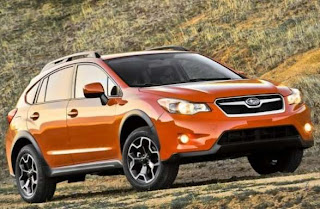 This 2013 Subaru XV Crosstrek release date canada and UK, 2013 Subaru XV Crosstrek pictures/photos. Subaru based the new Subaru XV Crosstrek on the Impreza® platform, making significant changes to the chassis & body & configuring interior standard equipment & options specifically for this new model. All 2013 Subaru XV Crosstrek models are powered by a 148-horsepower.0-liter BOXER engine, teamed to Symmetrical All- Wheel Drive by a five-speed manual transmission or available second-generation Lineartronic® Continuously Variable Transmission (CVT).
This 2013 Subaru XV Crosstrek release date canada and UK, 2013 Subaru XV Crosstrek pictures/photos. Subaru based the new Subaru XV Crosstrek on the Impreza® platform, making significant changes to the chassis & body & configuring interior standard equipment & options specifically for this new model. All 2013 Subaru XV Crosstrek models are powered by a 148-horsepower.0-liter BOXER engine, teamed to Symmetrical All- Wheel Drive by a five-speed manual transmission or available second-generation Lineartronic® Continuously Variable Transmission (CVT).Although official the Environmental Protection Agency fuel economy figures are not yet obtainable, Subaru projects the 2013 Subaru XV Crosstrek to accomplish 25 mpg city / 33 mpg highway / 28 mpg combined, which is excellent for an all-wheel drive crossover vehicle. The 15.9-gallon fuel tank in the Subaru XV Crosstrek is one.4 gallons greater than that in the Impreza models.
Compared to the Subaru Impreza five-door model it is based on, the 2013 Subaru XV Crosstrek incorporates numerous body & chassis enhancements for its expandedcapability mission. Black side- & wheel-arch cladding, rocker spoiler & roof rails provide a rugged contrast to the body color. The higher ride height, roof spoiler & unique-design 17-inch wheels bolster the Subaru XV Crosstrek model’s go-anywhere stance & attitude. Front & rear bumpers & the front grille are distinctive to the Subaru XV Crosstrek, & dark-tint privacy glass is standard.
The rugged styling is backed up by function, as the four-wheel independent suspension features a raised configuration in the Subaru XV Crosstrek. The new crossover model’s 8.7 inches of ground clearance is higher than for most other crossovers and even some dedicated SUVs. The Subaru XV Crosstrek uses standard 17-inch alloy wheels with 225/55 R17 all-season tires to provide all-weather traction and performance. The fourwheel disc brake system in the Subaru XV Crosstrek features larger front rotors than on the Impreza 2.5i models.
The standard five-speed manual transmission includes the Subaru Incline Start Assist feature, which will briefly hold the vehicle while the driver coordinates brake and clutch to pull away from a stop on a hill. Available for the Subaru XV Crosstrek Premium models and standard on the Limited trim line; the Subaru Lineartronic CVT provides infinite variability between the highest and lowest available ratios with no discernable steps or shifts.
The CVT continuously and smoothly adapts to performance demand, helping to keep the engine in its most efficient operating range. A six-speed manual mode with steering wheel paddle shifters allows the driver to control the transmission via six pre-set ratios. With either transmission choice, a standard ECO gauge helps the driver to operate the vehicle as economically as possible.
For safety, the Subaru Ring-Shaped Frame Reinforcement body structure has been proven in more than a decade of use. Inside, the Subaru XV Crosstrek fills out its safety roster with a driver’s knee airbag and standard front side pelvis/torso airbags and side curtain airbags that offer front and rear outboard seat coverage. The passenger-seat front airbag features a shell-type design with a center groove, thus exposing the passenger to less impact force upon deployment.
Vehicle Dynamics Control (VDC) combines stability and traction control functions. Traction control works to augment the Symmetrical All-Wheel Drive functionality. The 4- wheel disc Anti-lock Brake System (ABS) integrates Electronic Brake-force Distribution (EBD) and the Brake Assist safety system. A new Brake Override system ensures that the engine power will be cut when both the brake and accelerator are pressed simultaneously.
Subaru offers two different Symmetrical All-Wheel Drive systems in the 2013 Subaru XV Crosstrek models. With the five-speed manual transmission, the AWD system uses a viscous-coupling locking center differential to distribute power 50/50 front to rear. Slippage at either set of wheels will send more power to the opposite set.
0 comments:
Post a Comment